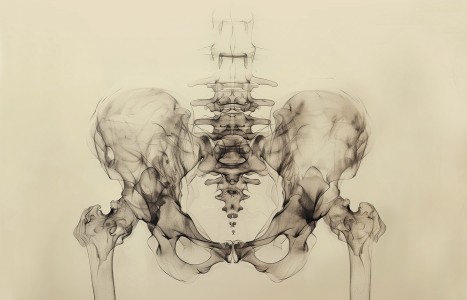People today want convenience, whether it be from their bank, credit card, favorite retail store, or restaurant. They demand it from the companies who hold their loyalty, including their health care providers (you). They don’t want to call and possibly be put on hold, and they want to use an app or schedule an appointment on your website. Here are three reasons your practice can gain by switching to online appointment scheduling.
Resilience is the New Longevity
re·sil·ience
noun
: the ability to become strong, healthy, or successful again after something bad happens
: the ability of something to return to its original shape after it has been pulled, stretched, pressed, bent, etc.
Sometimes we must enter a room through one door and not another, even though they both lead into the same space. I am talking now of the recent cachet with the concept of "resilience" regarding health, chronic pain and longevity. More largely, those qualities that can be learned that teach us how to become more resilient to the challenges of life. Not too long ago, the practices of yoga, meditation, guided imagery, Qi Gong and other forms of mind/body work were dismissed or even disdained at the institutional levels of science, health and business. Now institutions such as Harvard, UCSF, University of Arizona, and the University of Virginia are beginning to embrace what is now being called resiliency practices for their own faculty and students. Business and academia realize now the ravages of chronic stress on our health and are becoming more amenable to spending resources towards building resilience. "Resilience practices" is a more welcoming door for Science, Business and Academia to enter, than something that smacks of Eastern Religions. So be it.
Resilience is not Stoicism
Resilience is similar to equanimity in the Buddhist sense. The ability to accept all experiences as one taste. This doesn't mean the way a vulcan, like Spock would be, without emotion or feeling. We are human, we have feelings. There is a wonderful story about the great Tibetan saint, Marpa, who was Milarepa's teacher, that speaks to our humanity. One day Marpa's son was killed in a horseback riding accident. Marpa was grieving openly in front of his students. When one of the student's asked why he was so sad when he had taught so often about life as an illusion, and the truth of impermanence, Marpa answered, that yes, it is so and that losing a child is one of the greatest illusions of them all. This story illustrates that the beauty of our human qualities are not to be abandoned in the pursuit of enlightenment. In fact, they must be embraced as the continual stream of experience arises.
Stoicism implies a type of forbearance, or toughing it out, sometimes by negating what is present. Resilience is an embracing of all that arises, the good with the bad. When we look at the qualities of those that embody resilience, other words come to mind: Openness, flexibility, forgiveness, pliability, adaptability, bendability. Resilience practices cultivate these qualities.
Relationships and Resilience
When there is a strong social network of family and friends people are more able to call upon not only their own resources but those of others. For the vast majority of human existence, we have lived in small groups, as hunter-gatherers. As agriculture allowed for density of living and stratification of job descriptions, we have come to focus on the family as the core social network for all of our needs. In the modern world, we now incorporate friends and social services but this is quite new. In any event we depend on each other.
In this country in particular, there is an exaltation of independence. Unfortunately, our striving for independence creates a false sense of security. Our quest for independence may have contributed in some way to our loss of community. Many are isolated and alone at the end of life; away from family and friends. It has been found that amongst the longest lived cultures, individuals are surrounded by the same people they grew up with, often enjoying connections throughout entire lifetimes. This may be a horrifying thought to some, but it is the original safety net. The reality is that we are interdependent on each other and all life, and non-life on the planet. We are dependent on everything around us - nitrogen fixing bacteria in the soil, plants for oxygen, and whole ecosystems for our food and water. When we are healthy and strong we take care of others who need us. When we falter, there are those who step forward who are capable and willing. This is how a functioning society works. Mutual Assured Dependence (MAD) as opposed to U.S. nuclear policy, which is Mutually Assured Destruction. We are as independent as an astronaut on a space walk.
In terms of our own health and healing, we must strike a balance between turning inward, like the wounded animal crawling off to hide and recover and the need to ask for and receive help. Strategic help can be the vital difference between thriving and suffering, If we learned the art of balance between self care and reaching out for help, we may master resilience.
As primary health care providers with a holistic view, we can look beyond our own modalities, and broaden our view of how we may assist someone to full resilience. We might begin with asking what kind of support systems our patients/clients have in place; such as family, friends, social services and other providers as well as what their time and space situation looks like.
Time, Space and Resilience
If someone gets sick or injured, how easy is it going to be for that person to take time off from work, or child rearing, and be able to just sleep or rest? What kind of financial pressures exist that would become an obstacle against healing? Is there slack in the system or are they running full tilt all the time? People often make unconscious calculations such as, "I can beat this one out if I can just get through the rest of the week." Or, "I just don't have time, or I can't afford to be sick." Occasionally, this type of stoicism may be helpful, but often it is not coming from a real sense of awareness of what is actually going on. We must at times be willing and able to stand up for our patient/client in a way that they might not do for themselves. First, if we believe that rest is crucial for their situation, it is our obligation to help them understand that missing a day or two now might prevent missing a week or two later.
Often, those who care for others are unwilling to afford themselves the same kind of care they give to others. These people might be willing to realize that if they go down, they won't be able to help anyone. We don't like to threaten or be the bearer of bad news, but encouraging someone to rest is rarely a mistake. Help them brainstorm who they can call upon for help. Offer to write them a doctor's letter or make a phone call to their support people asking for assistance, as they are not likely to do so themselves. This helps give them the cover of legitimacy for the severity of their illness or injury that might prompt others into action for them.
When one feels taken care of, the restorative powers that we naturally have are more able to flow forth. Remember that their network of support may be made up of those they ordinarily support. This may cause fear and uncertainty in those who feel that their primary care-giver is compromised. Awareness of these role reversals and sensitivity in dealing with them go a long way. Often, these role reversals are great opportunities for karmic balancing to take place. Much healing can arise amidst the feelings of gratitude and appreciation that is now flowing in another direction.
Resilience and Comedy
In Woody Allen's Crimes and Misdemeanors, Alan Alda's character, based on the comedy writer Lester Gelbart, pompously states that the secret to comedy is that it bends, but doesn't break. Bending is funny, breaking isn't. What's funny is that he is right. Gelbert is also credited with the line, "Comedy is tragedy plus time."
What is resilience if not tragedy plus time? "Resilience is a quality that is hugely assisted by humor. Laughing is the greatest balm of all, after sleep." - My quote.
Culturally, there is probably no coincidence that the Jews, who have proved themselves quite resilient as a culture, have used humor as a core aspect of Jewish identity (full disclosure: I am Jewish). In the late 1980s and early 1990s, the Dalai Lama invited Jewish leaders to engage him in answering the question of how Jewish resiliency over the last 2,000 years in exile might inform the Tibetan struggle for maintaining their own cultural and religious identity in exile.
Here is a story that illustrates the tone of one of the first meetings:
The Jewish scholars were from the four major branches of Judaism, Orthodox, Reform, Conservative and Reconstructionist. They often disagreed vigorously among themselves, for example, about modern Jewish beliefs about life after death, reincarnation and resurrection in a Messianic age. "You've just learned one of the keys to Jewish survival," said a participant, Rabbi Irving Greenberg, an Orthodox scholar. "We disagree with each other all the time." "No we don't," said Rabbi Lawrence Kushner of Sudbury, Mass., a Reform Jew and writer of theological works. The Dalai Lama rocked with laughter.
The qualities that enable a culture to endure are not much different from those that enable an individual to thrive and survive. Again, a reminder of those synonyms of resilience: openness, flexibility,forgiveness, pliability, adaptability, bendability, please add your own. These are the qualities that we must cultivate in ourselves and others so that we may all become... well, more resilient.


